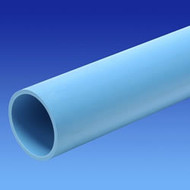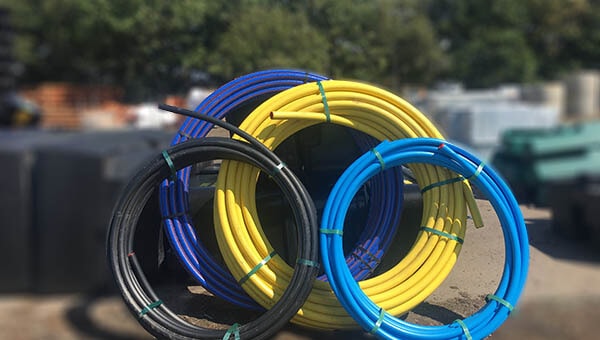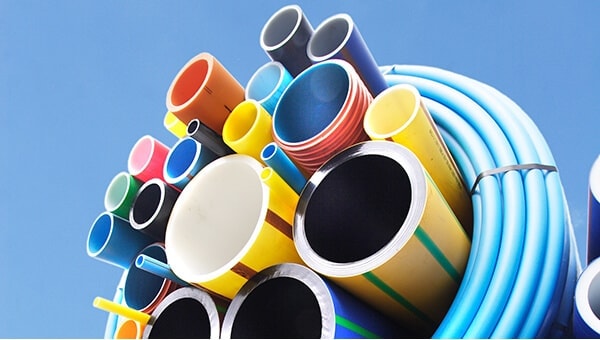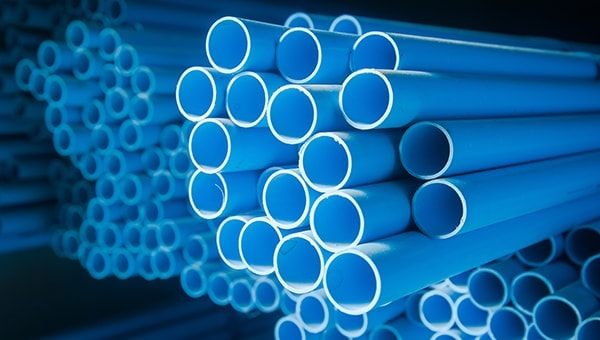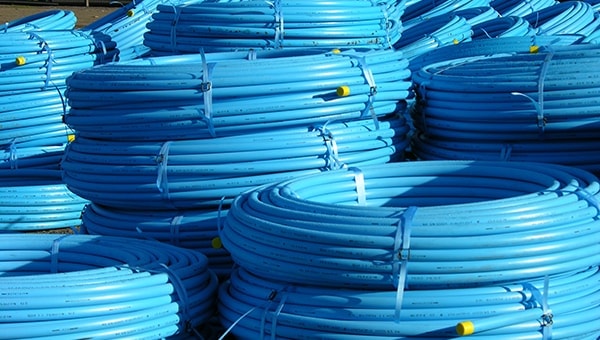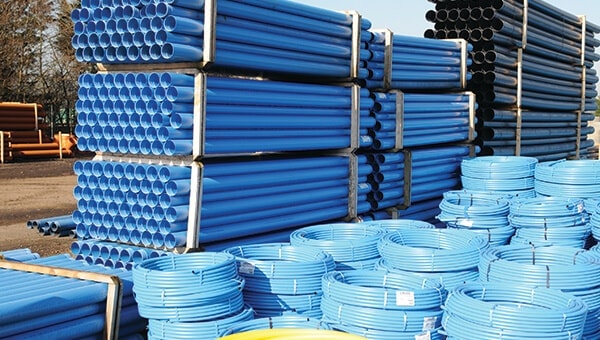
Follow our advice and guidelines for safe installation depths of both water (blue) and gas (yellow) MDPE. Water Pipe: Blue MDPE for drinking & Black MDPE for general water supply.
Water supply pipe can be installed using various procedures and techniques, with modern pipelaying techniques offering low-dig or no-dig laying possibilities, and conventional open cut trenching still being the most common install method.
How deep should Blue MDPE be installed?
Blue water supply MDPE should be laid in a trench at a depth of at least 750mm (measured from the pipe crown), but no more than 1350mm, from the finished ground level and at least 350mm away from other utilities (such as gas or electricity). Some water authorities allow MDPE to be laid at a shallower depth, depending on circumstances, but must be insulated; check local water authority guidance.
A minimum 100mm cover should be placed above the crown of the pipe, with heavy compaction equipment not being used with less than 300mm cover. Backfilling should proceed in 300mm layers. To protect the pipe from potential future interference it is good practice to install a marker tape 300mm above pipe crown, and may include tracer wire to allow for ground-level indentification of the pipeline.
The following process describes conventional open cut trench installation of below ground water supply:
- Consult the Water Supply (Water Fittings) Regulations 1999, which require installers and owner/user/occupier to install pipework and use suitable pipework and fittings. Your local water authority should also offer a guide on how to install new supply pipework.
- Prior to excavation, identify the location of cables and pipes from other utilities.
- The width of the trench should be the minimum of pipe outside diameter (OD) plus 250mm to allow for the correct compaction of sidefill.
- Where water pipe enters or runs underneath a building it must be located within ducting, and it is essential they are sealed with a blanking cap (and usually also with foam pipe insulation). No joints or fittings should be used if pipe is located within ducting.
- Consult WIS 4-08-01 for details on bed and fill materials; in some instances MDPE may be laid directly onto the trimmed trench bottom where the soil is uniform, fine grained and free from large stones and flints. In other cases the trench should be excavated to a depth to allow for a minimum 100mm bed of gravel, crushed stone or coarse sand. A sand/gravel mix is acceptable provided the gravel is less than 20mm in size.
Gas pipe (Yellow MDPE)
Gas pipework, which is coloured yellow, is often laid directly in open trenches in a similar method to blue MDPE above. However, in some circumstances, pre-laid ducting is often installed by the groundworker to allow for MDPE pipe to be installed at a later date.
Gas Pipe Ducting Diameters
The diameter of ducting required depends on the size of the MDPE being installed. The following is guidance only; check with your local authority for exact details for your project:
- For pipe sizes <= 32mm, use 60mm gas ducting
- For pipe sizes <= 40mm, use 100mm gas ducting
- For pipe sizes <= 63mm, use 150mm gas ducting
- For pipe sizes <= 90mm, use 200mm gas ducting
Gas Pipe Cover Levels
Minimum depths of cover over ducting depends on where the pipework is being installed. Drawcord must be inserted into the ducting and gas marker tape must be laid at a minimum of 75mm above ducting to avoid future interference, and may include tracer wire.
For service pipework
- Footpath/driveway - 375mm
- Public footpath - 450mm
- Public highway/verge - 450mm
For mains pipework
- Footpath/driveway - 600mm
- Public highway/verge - 750mm
- Fields - 1100mm
It is important if you are fitting new gas works in your property (private ground) that you read guidelines carefully as you are responsible for safely guarding the trench and making sure anyone who has access to the work on the property is not put at risk. Always consult your local authority for guidance, and contact JDP for advice and support.
Yellow Gas Supply MDPE
Avoid freezing pipes
According to 'The Department of the Environment', they recommend that pipes should be buried at least 600mm (two feet) underground. At this depth, the soil acts as a natural insulator and prevents them freezing.




